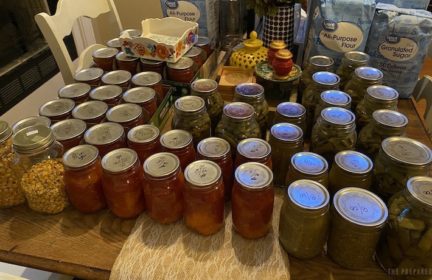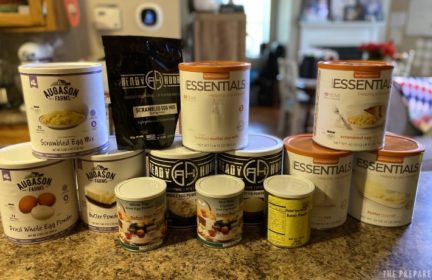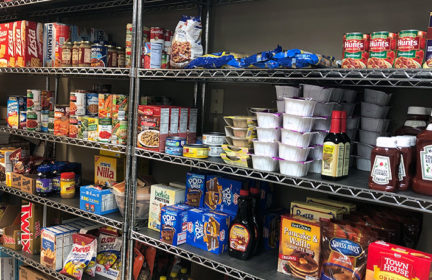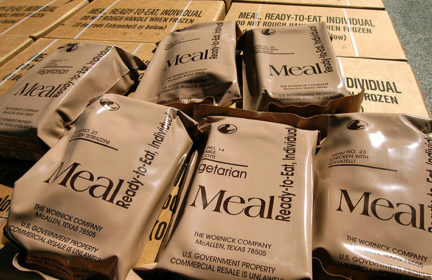Emergency food prep in urban, apartment living?
So, let’s say there’s a big power outage and we have to dig into our emergency food stash. Most of us still rely on heat and boiling water to prep that food. How do you cook in a survival situation if you live in an apartment without easy access to the outside? If you have a gas stove you can use that, if the gas stays on. But what if the gas is turned off? Or what if you have an electric stove? If you have access to the outside, you can use a propane stove, assuming the authorities aren’t asking you to avoid making any sparks outside, as they do here in Northern California during elevated fire danger days. But what if it IS one of those day? Or what if you live in an apartment with no private outside space? What are the best preps for making sure you can cook your food?
-
Comments (14)
-
squirrel - July 2, 2020
Some possibilities:
- Have some part of your food stash that doesn’t need heating (emergency rations, canned food)
- Use MREs (no personal experience, but from what I know they include a chemical heater)
Assuming proper ventilation is possible:
- Tea candles for heating (such as are being used to keep food warm)
- Alcohol burner (e.g. Trangia stove)
- Gas stove for camping (using gas canisters)
A white gas stove would also be possible, but would not recommend due to the fire risk if not handled carefully.
-
SeaBee - July 2, 2020
NYC prepper here, though it’s still mostly amateur hour in my place.
1) For no-cook options, you can keep a base of MREs or e-rations (Datrex/etc). I wouldn’t want to have subsist for too long on either, but you can. Mileage might vary for kids/dietary needs.
2) Mentioned before elsewhere: Jetboil (or similar) for boil-only food options like freeze dried and emergency kits. If you aren’t incapacitated (alcohol/drugs/etc), indoor use is completely fine: most of the warning hysteria pertains to use in small, enclosed spaces like tents. Highly unlikely you will burn all the O2 in your apartment during a 2-minute boil. That said, smart to crack a window and use stove near venting to ensure your lips don’t turn blue. Get the stove-assembly stabilizers to keep the fucker from tipping over (top heavy) and practice this in your place before you need to actually use it.
I have 1L propane bottles to run my two-burner Coleman camp stove in this situation, and an adapter that allows me to affix my Jetboil to the 1Ls.
3) I wouldn’t recommend white gas for indoors.
Fire extinguisher updated? Often an oversight.
-
EzlyAmuzzed - July 2, 2020
Camp propane stoves, such as those well known Coleman stoves are your best bet for cooking if you loose utilities IMO. For those its better to use outside or on a patio, or if inside just don’t use it for a long time. If space is an issue backpacking burners may be an option. They are very small and use tiny butane canisters. Downside is those canisters do not last long and aren’t cheap, but it is small. Ideally you want food that cooks fast, or basically just needs reheating for these options.
Some emergency food has those sleeves that heat up the food, its activated when water is added. This food is not dehydrated, think wet food in a can. My experience with those is meh, luke warm and you wait a while, but in a pinch it works. I have used them on the trails.
-
Mary Ellen Feinberg - July 7, 2020
In addition to the options mentioned (tea lights, Jet Boil, etc.), I’d add Sterno. I have a cheap folding camp stove that uses Sterno, and I’m pretty sure it’s sufficient to boil the cup or so of water needed to cook freeze-dried, backpacker-type meals (or heat a can of soup), especially if using a small, thin-walled pot with a lid. I’ve been making a bunch of backpacker meals, and I bought the Mylar bags to put them in (with food-grade oxygen absorbers). You can add the boiling water directly to the Mylar bag and let it soak for 10 minutes or so. I also saw a video of a thru-hiker who made her own “pot cozy” out of reflectix insulating material. That way she’d just boil water, add the food, and put the pot in the cozy to finish cooking, saving a lot of fuel.
In an over-abundance of caution, I’d still crack a window and make sure my CO detector’s batteries were good.
I had to come up with something because my prewar NYC apartment building has been without gas for cooking for a YEAR (finally getting that fixed after being postponed by COVID). So I’ve been cooking with a hot plate, slow cooker, and microwave. If the electricity went out, I was definitely screwed, especially if the food supply chain got wonky at the same time. That’s what turned me into a prepper!
-
Paul Martin - July 7, 2020
I put the Ready Citizen Manual together a few months ago, along with a food planning spreadsheet. You may find some ideas here.
For cooking options, you may find a solar oven a good option depending on the amount of sunlight you get and whether you have a porch or other place to put the oven while it’s heating up your food. I have a SunOven and am very impressed with it.
-
shtfhappens - July 12, 2020
As someone who isn’t familiar with “solar cooking”, how would you quickly describe the line between what is good to cook with it vs. what’s not? I just don’t have a frame of reference for how to think about where a solar cooker might fit into the grand scheme of things.
-
Paul Martin - December 26, 2021
Solar cooking is no different than any other form of cooking, except for the fact you need the sun to be in full view. The plan is to use the solar cooking devices in situations where we are trying to conserve propane for cooking. Hope that helps!
-
-
Estel - November 25, 2021
I’ve been thinking about this problem, since I also live in an urban apartment with an electric stove.
My plan is to focus on foods that can be eaten without cooking at all. In addition to obvious things like canned foods and crackers and dried fruits, I’ve been thinking about foods that can be eaten with simple rehydration. Things I’ve been thinking about include:
Powdered milk (I love dairy, and while I wouldn’t want to drink reconstituted powdered milk by itself, I think it can probably work well as an ingredient in no-cook recipes)
Quick rolled oats – I ate these raw for breakfast with milk and flavourings (like chocolate chips and dried fruit and shredded coconut) most of my life – it was a breakfast I grew up with.
Minute rice – I recently experimented with rehydrating it with cold water and if you wait long enough, it’s perfectly edible (I meant to check it after an hour but I forgot about it and it was more like 2 or 3 hours by the time I remembered, so I’m not sure quite how long it takes). Could be good as a base for more flavourful stuff in cans, or with canned beans and seasonings. Or make it with powdered milk and add sugar and cinnamon and it could be something like cold rice pudding.
Instant polenta – I haven’t tried this yet but since I believe it’s precooked and dried, it would probably work okay rehydrated.
I am planning to do some experimentation with how to put these kinds of ingredients together into meals that taste good even without cooking.
-
Molly N. 😆 - November 26, 2021
Quick rolled oats and minute rice works without having to heat it and only adding water? 😋 That’s good to remember and may be something I could add to my bug out bag.
-
Estel - November 26, 2021
Yes, they won’t be the same as if you cook them but they will be food. I have some quick rolled oats in my go bag (which is not very good yet and still needs a lot of work).
-
EzlyAmuzzed - November 30, 2021
When you mentioned minute rice that reminded me of when I took a trip for the US to the Netherlands I didn’t want to eat or pay for the food so I prepared meals using Raman or minute rice, dehydrated beans and vegetables and spices. Before boarding I went to Starbucks and asked for my thermos to be filled with hot water. Later when everyone was getting their food I added the water and let sit 10 mins before eating. Obviously foot wasn’t hot but sure tasted better than what others had.
To get hot water at home an easy and cheap method is the penny can…which is basically a cat food can with a circle of holes punched in with a hole puncher, then filled with denatured alcohol that is lit. It burns just long enough to make food warm. For outdoors only and I recommend a wind shield which can even be just tinfoil.
-
hikermor - November 30, 2021
Therecare many readily available foods which can be eaten once you have torn off the wrapper or opened the box – beef or turkey jerky is one of my favorites – and don’t forget dark chocolate!!
-
Carter Murphy - November 30, 2021
Some jerky, chips, and dehydrated fruit are my go to quick meals for when I’m on a trip.
-
Carter Murphy - November 30, 2021
That is a great travel hack! On my last flight they didn’t even offer a snack and I wish I had brought something. Some minute rice would be much tastier than any of the airline food.
-
-
- News for the week of 2025-07-07 - 5 days ago
- Fun ways to teach kids outdoor/survival skills - 2 weeks ago
- News for the week of 2025-06-30 - 2 weeks ago
- News for the week of 2025-06-23 - 3 weeks ago
- News for the week of 2025-06-16 - 3 weeks ago
This forum is heavily moderated to keep things valuable to as many people as possible. Full community policies are here. The basics:
- 1. Be nice to each other.
- 2. Stay focused on prepping.
- 3. Avoid politics, religion, and other arguments.
- 4. No unfounded conspiracies, fake news, etc.
- 5. Debate ideas, not people.




